 W
WLucílio de Albuquerque was a Brazilian painter, designer and art professor.
 W
WBelmiro Barbosa de Almeida was a Brazilian painter, illustrator, sculptor and caricaturist.
 W
WTarsila de Aguiar do Amaral was a Brazilian painter, draftswoman and translator. She is considered one of the leading Latin American modernist artists, and is regarded as the painter who best achieved Brazilian aspirations for nationalistic expression in a modern style. As a member of the Grupo dos Cinco, she is also considered a major influence in the modern art movement in Brazil, alongside Anita Malfatti, Menotti Del Picchia, Mário de Andrade, and Oswald de Andrade. Tarsila was instrumental in the formation of the aesthetic movement, Antropofagia (1928–1929); she was in fact the one with her celebrated painting, Abaporu (1928), who inspired Oswald de Andrade's famous Manifesto Antropófago.
 W
WRodolfo Amoedo was a Brazilian painter, designer and decorator.
 W
WHenrique Bernardelli was a Brazilian painter.
 W
WModesto Brocos y Gómez was a Spanish painter, and engraver, naturalized Brazilian citizen.
 W
WPedro Paulo Bruno was a Brazilian painter, singer, poet, and landscaper of Italian origin. His best known work is the 1918 painting A Pátria (Fatherland), which depicts the Brazilian flag being embroidered by a family.
 W
WAthos Bulcão was a Brazilian painter and sculptor. He was born in Rio de Janeiro.
 W
WBenedito Calixto de Jesus was a Brazilian painter. His works usually depicted figures from Brazil and Brazilian culture, including a famous portrait of the bandeirante Domingos Jorge Velho in 1923, and scenes from the coastline of São Paulo. Unlike many artists of the time, Calixto's patron was an individual other than the state, who were "the most dependable source of patronage."
 W
WIberê Bassani Camargo was a Brazilian painter, one of the greatest expressionist artists from his country.
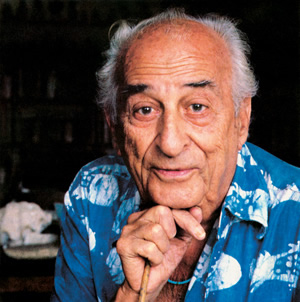 W
WHéctor Julio Páride Bernabó or Carybé was an Argentine-Brazilian painter, engraver, draughtsman, illustrator, potter, sculptor, mural painter, researcher, historian and journalist. He settled in Brazil and naturalized as a Brazilian.
 W
WDorival Caymmi was a Brazilian singer, songwriter, actor, and painter active for more than 70 years beginning in 1933. He contributed to the birth of Brazil's bossa nova movement, and several of his samba pieces, such as "Samba da Minha Terra", "Doralice" and "Saudade da Bahia", have become staples of música popular brasileira. Equally notable are his ballads celebrating the fishermen and women of Bahia, including "Promessa de Pescador", "O Que É Que a Baiana Tem?", and "Milagre". Caymmi composed about 100 songs in his lifetime, and many of his works are now considered to be Brazilian classics. Both Brazilian and non-Brazilian musicians have covered his songs.
 W
WLygia Pimentel Lins, better known as Lygia Clark, was a Brazilian artist best known for her painting and installation work. She was often associated with the Brazilian Constructivist movements of the mid-20th century and the Tropicalia movement. Along with Brazilian artists Amilcar de Castro, Franz Weissmann, Lygia Pape and poet Ferreira Gullar, Clark co-founded the Neo-Concrete movement. From 1960 on, Clark discovered ways for viewers to interact with her art works. Clark's work dealt with the relationship between inside and outside, and, ultimately, between self and world.
 W
WArthur Timótheo da Costa was an Afro-Brazilian painter and designer.
 W
WJoão Zeferino da Costa was a Brazilian painter and designer.
 W
WEmiliano Augusto Cavalcanti de Albuquerque Melo, known as Di Cavalcanti, was a Brazilian painter who sought to produce a form of Brazilian art free of any noticeable European influences. His wife was the painter Noêmia Mourão, who would be an inspiration in his works in the later 1930s.
 W
WThomas Georg Driendl was a German-born Brazilian painter, architect, and art restorer. He specialized in landscapes, portraits and religious themes.
 W
WJoão Fahrion was a Brazilian painter, engraver, draughtsman and illustrator. He was born and died in Porto Alegre.
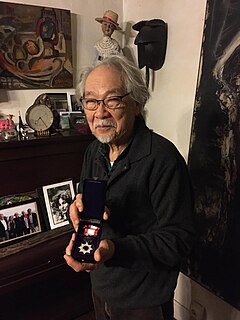 W
WFlavio-Shiró is a Japanese-Brazilian visual artist. Regarded as an influential postwar Brazilian painter, he is known for his dark and disturbing paintings that merge elements of abstract expressionism and surrealism. He is one of the main representatives of abstract expressionism in Brazil.
 W
WDomingo García y Vásquez was a Spanish-born Brazilian landscape painter.
 W
WJoão Ghelfi was a Brazilian painter.
 W
WClóvis Graciano was a Brazilian artist who worked with painting, drawing, scenography, costume design, engraving and illustration.
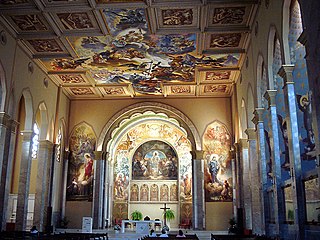 W
WAldo Locatelli was an Italian painter. His most important works are the frescos and panels in churches and public buildings of Rio Grande do Sul.
 W
WAmadeo Luciano Lorenzato, better known as Lorenzato was a Brazilian modernist artist. His painting portrays landscape and everday life in tropical savanna during Minas Gerais urbanization. Lorenzato's paintings also have a very characteristic pattern made by the use of vivid colors mixed with an adapted comb that left shades and texture at the canvases.
 W
WManabu Mabe (マナブ間部) was a Japanese-Brazilian painter. Mabe worked as a vendor of hand-painted ties in São Paulo before becoming a famous artist.
 W
WAnita Catarina Malfatti is heralded as the first Brazilian artist to introduce European and American forms of Modernism to Brazil. Her solo exhibition in Sao Paulo, from 1917–1918, was controversial at the time, and her expressionist style and subject were revolutionary for the complacently old-fashioned art expectations of Brazilians who were searching for a national identity in art, but who were not prepared for the influences Malfatti would bring to the country. Malfatti's presence was also highly felt during the Week of Modern Art in 1922, where she and the Group of Five made huge revolutionary changes in the structure and response to modern art in Brazil.
 W
WRoberto Burle Marx was a Brazilian landscape architect whose designs of parks and gardens made him world-famous. He is accredited with having introduced modernist landscape architecture to Brazil. He was known as a modern nature artist and a public urban space designer. His work had a great influence on tropical garden design in the 20th century. Water gardens were a popular theme in his work. He was deftly able to transfer traditional artistic expressions such as graphic design, tapestry and folk art into his landscape designs. He also designed fabrics, jewellery and stage sets.
 W
WAldir Mendes de Sousa (1941–2007) was a Brazilian painter and physician.
 W
WSérgio Milliet da Costa e Silva, generally known as Sérgio Milliet was a Brazilian writer, painter, poet, essayist, literary and art critic, and sociologist.
 W
WVicente do Rego Monteiro, born in Recife, was a Brazilian painter, sculptor, and poet, born to a rich family. He was part of the Semana de Arte Moderna exhibition and helped form the later Brazilian Modernism.
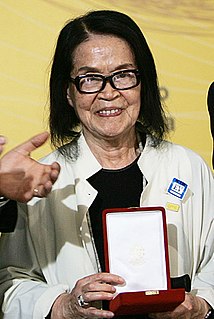 W
WTomie Ohtake was a Japanese Brazilian visual artist. Her work includes paintings, prints and sculptures. She was one of the main representatives of informal abstractionism in Brazil.
 W
WHélio Oiticica was a Brazilian visual artist, sculptor, painter, performance artist, and theorist, best known for his participation in the Neo-Concrete Movement, for his innovative use of color, and for what he later termed "environmental art", which included Parangolés and Penetrables, like the famous Tropicália. Oiticica was also a filmmaker and writer.
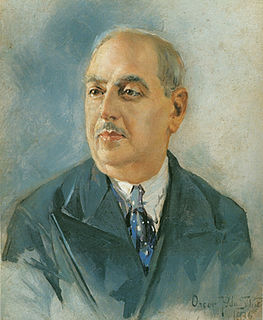 W
WOscar Pereira da Silva was a Brazilian painter, draftsman, designer, and instructor. He was active from the end of the 19th to the mid-20th century. He is noted for his depictions of historical events in Brazil, but also completed numerous portraits, religious works, genre scenes, still lifes, and landscapes. He "paid no attention to Brazilian folk tradition" and painted in an "antique style." After a period of study in France, he pursued a lucrative career in São Paulo, where his works are displayed at the Pinacoteca do Estado de São Paulo and the Museu do Ipiranga.
 W
WFayga Perla Ostrower was an engraver, painter, designer, illustrator, art theorist and university professor.
 W
WGiuseppe "José" Pancetti was a Brazilian modernist painter.
 W
WKarl Ernst Papf, or Ernesto Papf was a German-born Brazilian photographer, painter and designer.
 W
WAntônio Diogo da Silva Parreiras was a Brazilian painter, designer and illustrator.
 W
WCandido Portinari was a Brazilian painter. He is considered one of the most important Brazilian painters as well as a prominent and influential practitioner of the neo-realism style in painting.
 W
WManuel Lopes Rodrigues was a Brazilian Realist painter. Born in the city of Salvador, in the State of Bahia, he was initially homeschooled by his father, João Francisco Lopes Rodrigues, later entering at the Liceu de Artes e Ofícios, being taught by Miguel Navarro Cañizares.
 W
WMira Schendel was a Brazilian contemporary artist of the 20th century. She made numerous drawings on rice paper, but was also active as a painter, a poet, and a sculptor. Her work drew upon the art of language and poetry, and what appears to have driven her was the ability to reinvent it.
 W
WLasar Segall was a Lithuanian Jewish and Brazilian painter, engraver and sculptor. Segall's work is derived from impressionism, expressionism and modernism. His most significant themes were depictions of human suffering, war, persecution and prostitution.
 W
WDjanira da Motta e Silva was a Brazilian painter, illustrator and engraver, known by her first name Djanira. She was known for her naïve art paintings, depicting Brazilian common people, religious themes and landscapes.
 W
WAlfredo Volpi, was a prominent painter of the artistic and cultural Brazilian modernist movement. He was born in Lucca, Italy but, less than two years later, he was brought by his parents to São Paulo, Brazil, became a Brazilian citizen, and lived for the majority of his life. He was one of the most important artists of the so-called Grupo Santa Helena, formed in the 1930s with Francisco Rebolo, Clóvis Graciano, Mario Zanini, Fulvio Pennacchi, and others.
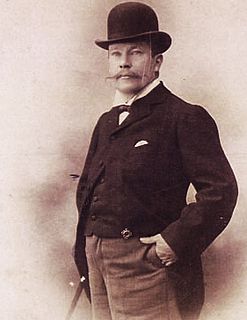 W
WPedro Weingärtner was an important Academic painter of Brazil, and the first artist born in Rio Grande do Sul to win international praise for his work.
 W
WAnna Clémence Bertha Abraham Worms was a French-born Brazilian art professor and painter of genre scenes and portraits.
 W
WEmmanuel Hector Zamor was a Brazilian-born painter who lived in France. He specialized in landscapes and still lifes in the style of the Barbizon school.
 W
WWilly Alfredo Zumblick was a Brazilian painter born in Tubarão, Santa Catarina state. His art expose historical facts, specially from his hometown.